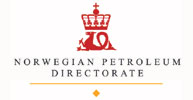|
Vol. 224 No. 9 |

|
 |
| ØYSTEIN NORENG, CONTRIBUTING EDITOR, NORTH SEA |
Challenges for Norwegian policy. With little exploration activity and few fresh oil and gas finds over the past few years, Norwegian oil policy faces increasing pressure to change. In this respect, bad news may lead to good news.
The bad news is that the Norwegian Petroleum Directorate’s (NPD’s) 2003 Resource Report (released in late June) lowers, for the first time, its estimate of ultimately recoverable petroleum resources. This estimate is down 7% from 2002’s figure. It includes all oil and gas produced so far, but excludes the Barents Sea zone disputed by Norway and Russia. Nevertheless, the Norwegian Continental Shelf (NCS) is a huge, complex area and, to a large extent, still unexplored. It is divided into three petroleum provinces – North Sea, Norwegian Sea and Barents Sea.
There is some good news – the North Sea resource estimate has been upgraded. This should be no surprise, when one compares activity levels with the adjacent UK Continental Shelf. NPD has identified about 500 North Sea prospects, of which about 60% are liquids. Therefore, the Norwegian sector is mature, but only in a narrow Norwegian perspective (fewer and smaller prospects), and not when compared to the UK or the US Gulf of Mexico.
Few huge prospects may be left, but the potential is good for finding fields that are considered medium-sized. Small Norwegian fields have not been an exploratory target, but they have been found while searching for large deposits. A more systematic search for smaller fields might reveal more numerous prospects.
NPD’s downgrade is due mainly to reduced estimates of undiscovered gas in the Norwegian Sea, as well as lower expectations for increased gas output. The estimate for undiscovered oil resources is, more or less, unchanged. Only one quarter of recoverable NCS resources has been produced and sold. There is good potential for additional discoveries.
 |
NPD’s recent downward revision of Norwegian reserves may force officials to re-examine oil and gas policies.
|
|
As for undiscovered resources, changes in the North and Barents Seas are insignificant. Increased knowledge of geology within the Norwegian Sea’s best, explored portion leads to reduced expectations of the size and number of discoveries. Estimated total undiscovered resources in the Norwegian Sea have, therefore, been reduced 30%, due entirely to lower gas figures.
Nevertheless, it still holds the NCS’s greatest undiscovered resource potential. One or two significant discoveries might alter the picture. Expectations regarding areas in the deeper parts of the Vøring basin of the Norwegian Sea have been reduced. By contrast, results of mapping during the last year suggest that areas off Lofoten are more promising than previously thought. Similarly, the Barents Sea potential could be upgraded with one or two good discoveries.
Over the last few years, Norway has produced more oil and gas than new finds have added to reserves, due to fewer exploration wells and smaller discoveries. NPD estimates that only about 60% of ultimately recoverable resources have been found. Unless exploration increases, much of the remaining resource base will not be discovered in the foreseeable future. Moreover, much of the resources that are discovered could be left in the ground after large fields cease output – smaller fields by themselves are considered uneconomical.
Average recovery rate for oil fields is now 45%. Officials’ goal is to reach average recovery of 50% for oil and 75% for gas. This requires further technological development and profitability. The challenge is to implement measures that stimulate R&D and make marginal prospect development more profitable. This may necessitate tax adjustments.
Norway’s petroleum activities face two hurdles: access and taxes. In recent licensing rounds, the government withheld promising acreage that had been announced. So far, much of the interesting acreage has not been opened to exploration for environmental reasons. This is despite the industry’s almost impeccable record of more than 30 years. Most oil spills are from ships, including the fishing fleet, not from oil and gas.
The government awaits discussion later this year of a new analysis of the environmental impact of petroleum activities before it licenses new acreage in sensitive offshore areas, including the Barents Sea. There are reasons to hope that this assessment provides a basis for exploration, development and production in these areas, some of which are geologically quite interesting.
Meanwhile, officials are changing the licensing system to stimulate more efficient exploration in mature areas. The change implies greater predictability, certain simplifications and a larger area available for applications. The new system will give companies more predictability. Through establishment of a fixed, predefined exploration area, the industry will know the tracts available in years to come. Better predictability with respect to acreage available and the scheduling of licensing rounds will improve companies’ long-term planning and allocation of internal resources.
The tax system remains a problem. It was designed in the 1970s to capture economic rent from a small number of large fields, but now it distorts the economics of developing smaller prospects, or even looking for them. With crude prices in a $25 – to – $30/bbl range, it is politically difficult to lower the general rate of the Special Tax (50% of net income), in addition to the 28% corporate income tax. It would, however, be possible to reduce the depreciation schedule from six years to three years (or even less), and to shelter smaller prospects with a higher production allowance before the Special Tax starts to bite. The report is clear on the need for better incentives. By September, it will be available in English at www.npd.no 
Øystein Noreng is Professor, Norwegian School of Management, and he holds the Total chair in petroleum economics and management. He is a regular contributor to this column.
|





